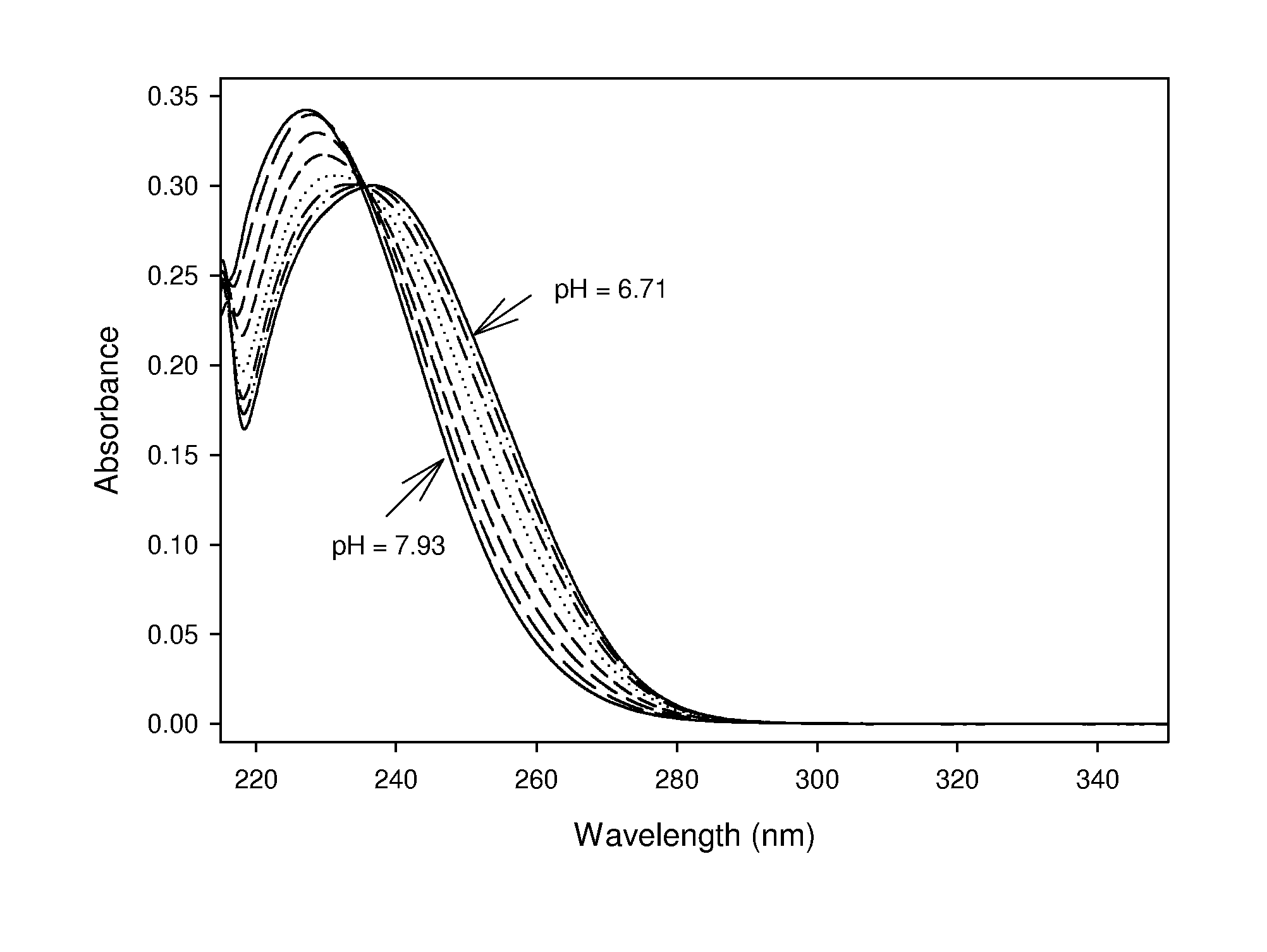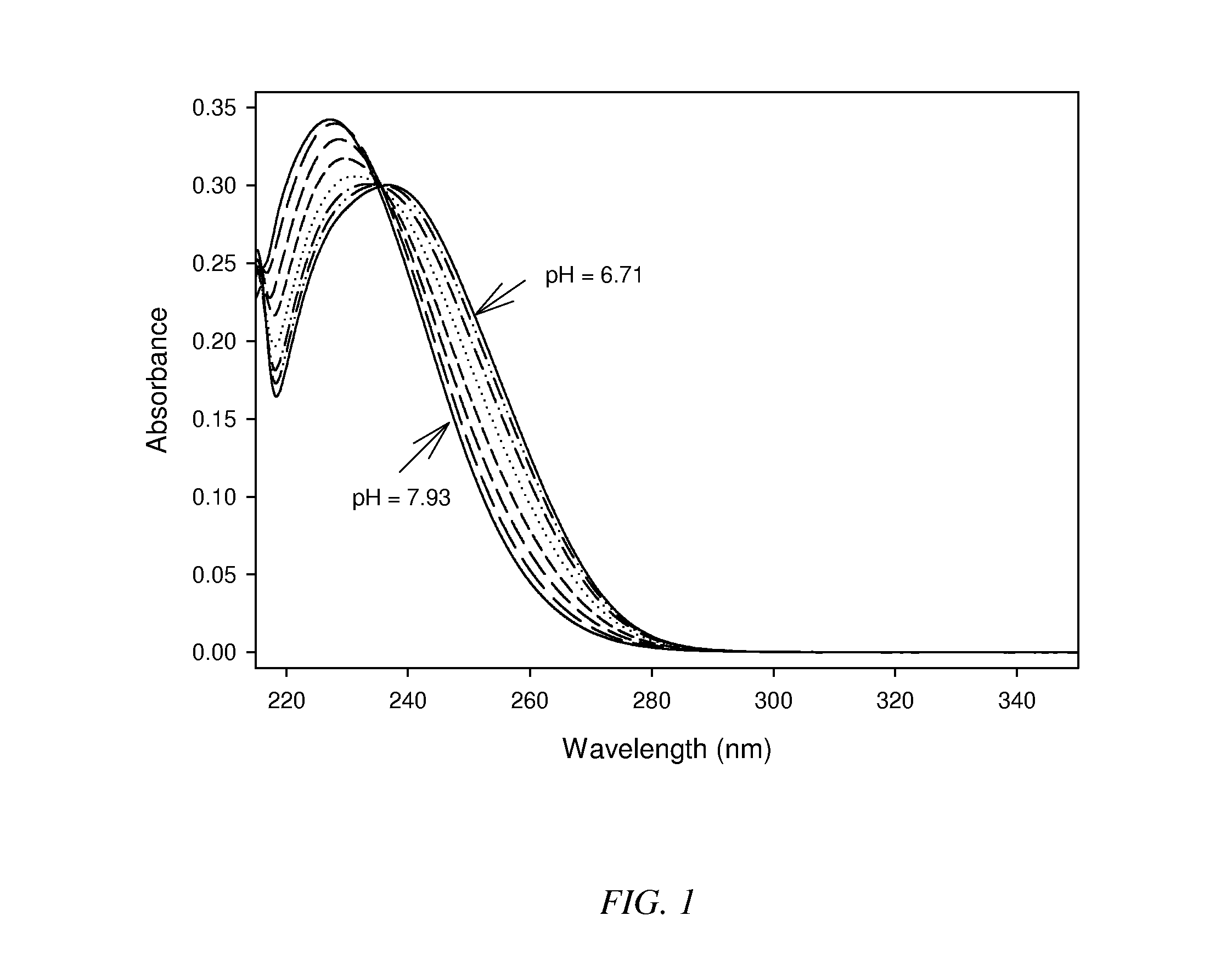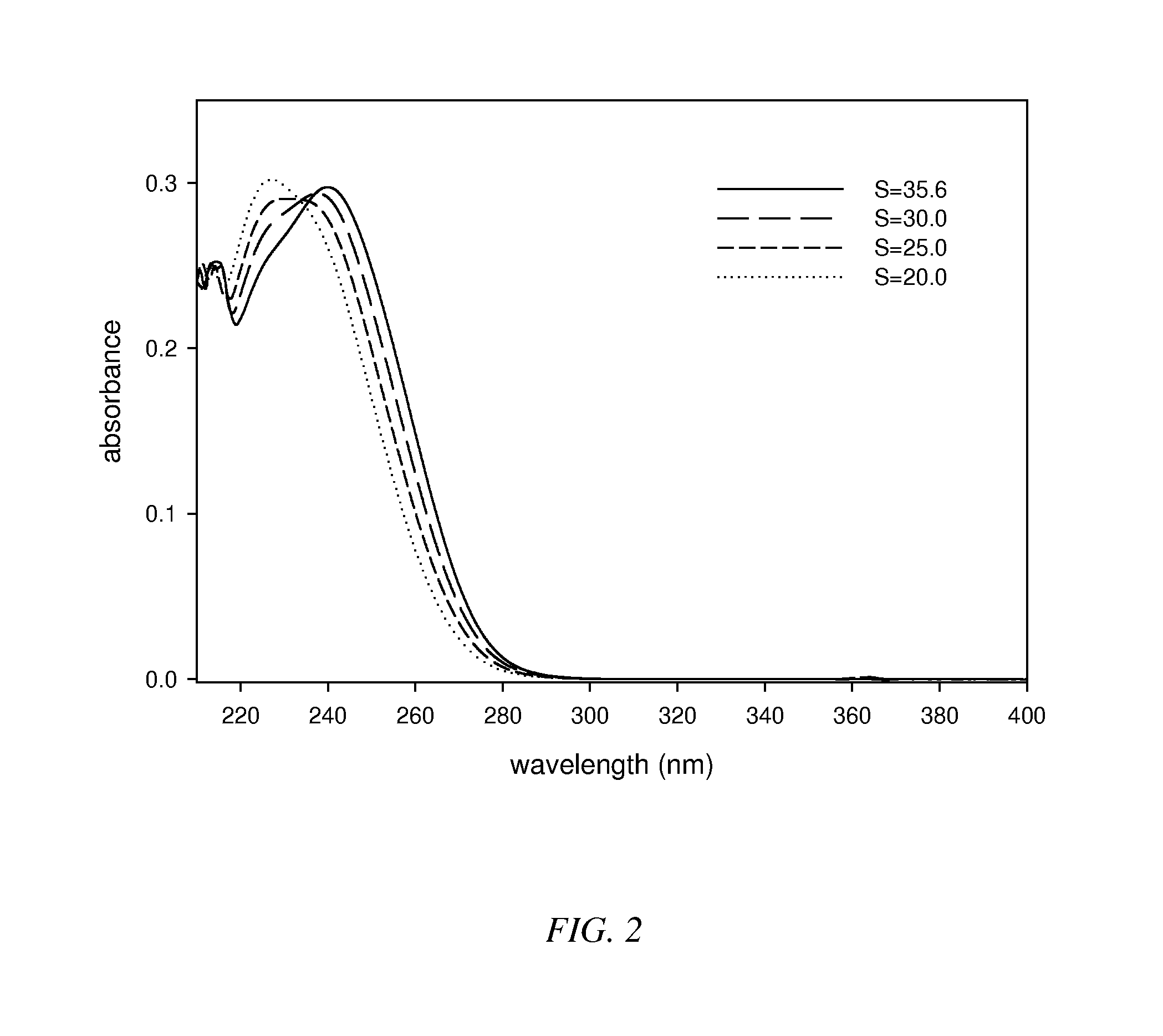Method of performing in situ calibrated potentiometric pH measurements
a potentiometric and in situ technology, applied in the field of extended deployment sensors, can solve the problems of difficult calibration of situ buffers, low endurance and measurement frequency of spectrophotometric devices, and rarely used potentiometric devices, etc., and achieve the effect of precise and accurate potentiometric ph measurements
- Summary
- Abstract
- Description
- Claims
- Application Information
AI Technical Summary
Benefits of technology
Problems solved by technology
Method used
Image
Examples
Embodiment Construction
[0032]Rising levels of atmospheric CO2 are leading to ocean acidification. The response of seawater and freshwaters to acidification processes has created a need for autonomous global monitoring of ocean water and fresh water pH. Potentiometric devices are rarely used for in situ environmental pH measurements because in situ buffer calibrations are problematic. Spectrophotometric devices have been developed for in situ environmental measurements but the endurance and measurement frequency of spectrophotometric devices is relatively low due to high power requirements and the limited longevity of lamps. Spectrophotometric and potentiometric devices can be combined to reduce power, enhance longevity and still provide high quality calibrated measurements.
[0033]Both potentiometric and spectrophotometric procedures can be used for pH measurements. Potentiometric pH measurements can be performed with relatively simple equipment and procedures required. This simplicity makes potentiometry a...
PUM
| Property | Measurement | Unit |
|---|---|---|
| frequency | aaaaa | aaaaa |
| frequency | aaaaa | aaaaa |
| frequency | aaaaa | aaaaa |
Abstract
Description
Claims
Application Information
 Login to View More
Login to View More - R&D
- Intellectual Property
- Life Sciences
- Materials
- Tech Scout
- Unparalleled Data Quality
- Higher Quality Content
- 60% Fewer Hallucinations
Browse by: Latest US Patents, China's latest patents, Technical Efficacy Thesaurus, Application Domain, Technology Topic, Popular Technical Reports.
© 2025 PatSnap. All rights reserved.Legal|Privacy policy|Modern Slavery Act Transparency Statement|Sitemap|About US| Contact US: help@patsnap.com



